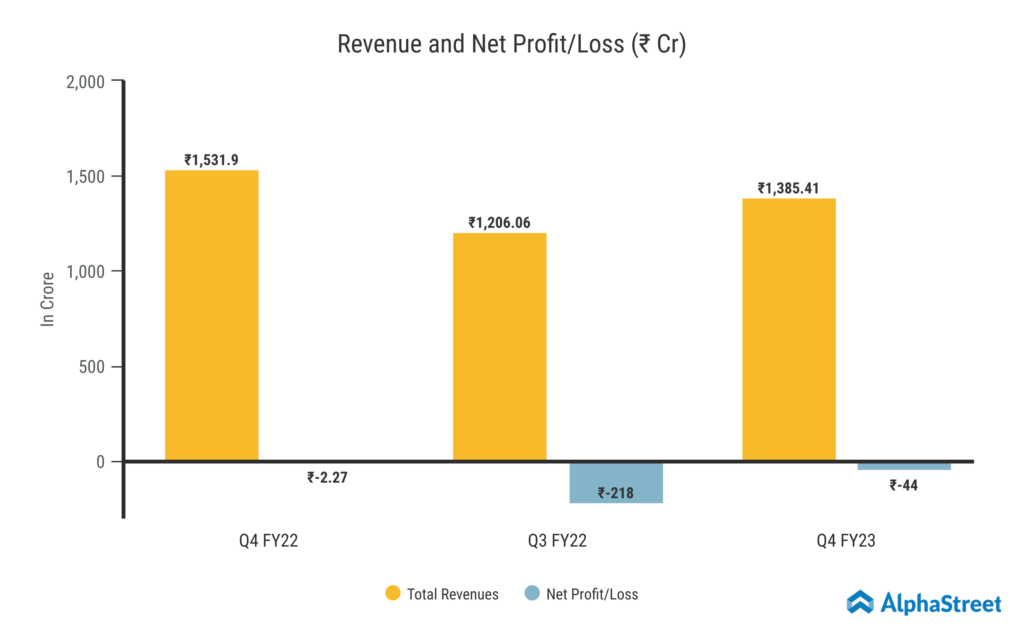Jaiprakash Power Ventures Limited is a leading Indian power company involved in the development, implementation, and operation of power projects in India. The company was incorporated in 1994 and is headquartered in Noida, Uttar Pradesh. JPVL is a subsidiary of Jaiprakash Associates Limited, a well-known infrastructure development company in India. JPVL operates and maintains thermal and hydroelectric power plants in various parts of India, including Himachal Pradesh, Uttar Pradesh, and Madhya Pradesh.
- Jaiprakash Power Ventures Limited reported Total Income for Q4 FY23 of ₹1,385.41 Crore down from ₹1,531.90 Crore year on year, a decline of 9.6%.
- Total Expenses for Q4 FY23 of ₹1,404.77 Crore up from ₹1,393.03 Crore year on year, a growth of 0.8%.
- Consolidated Net Loss of ₹44 Crore, increased from the loss of ₹2.27 Crore in the same quarter of the previous year.

